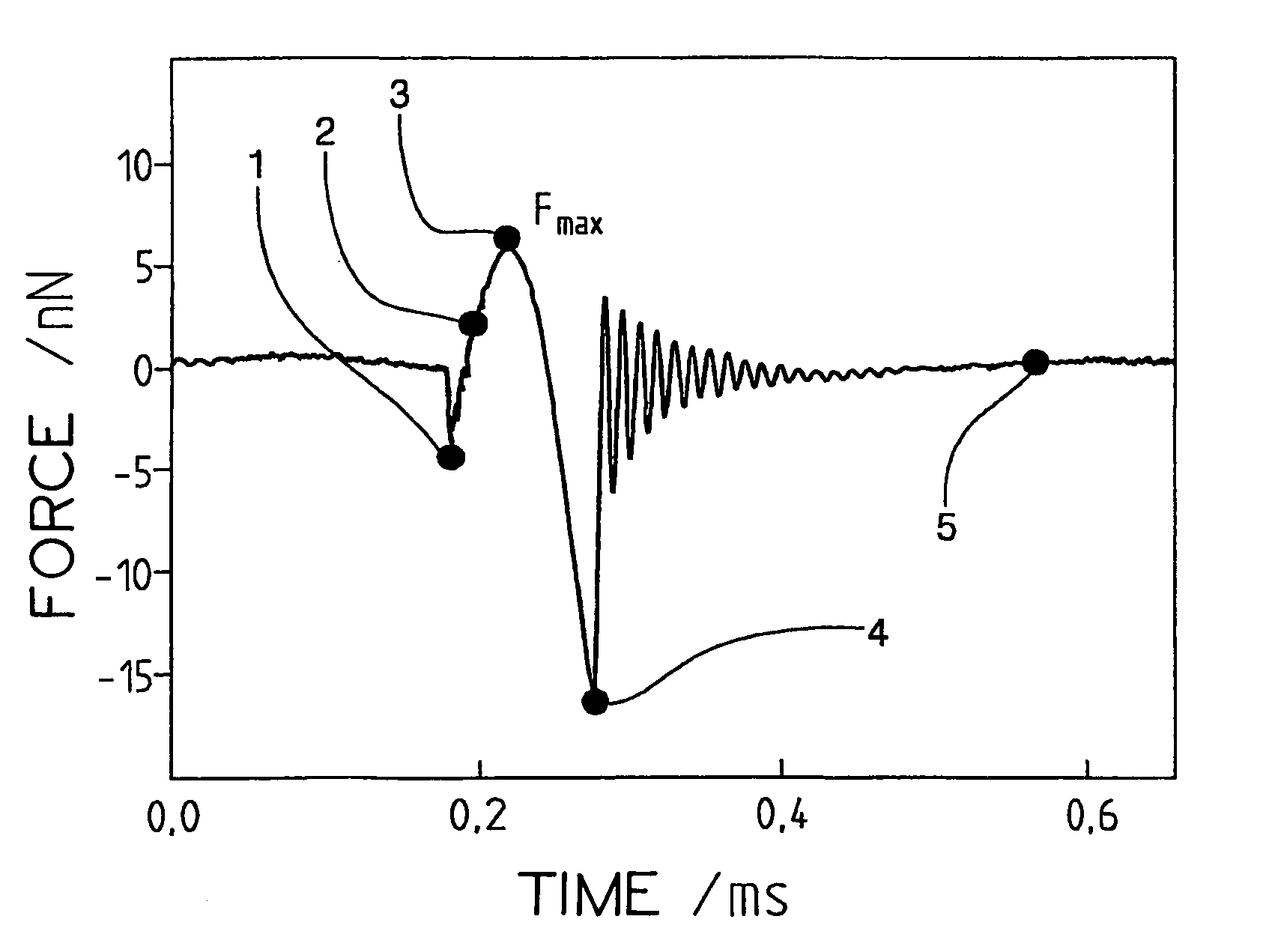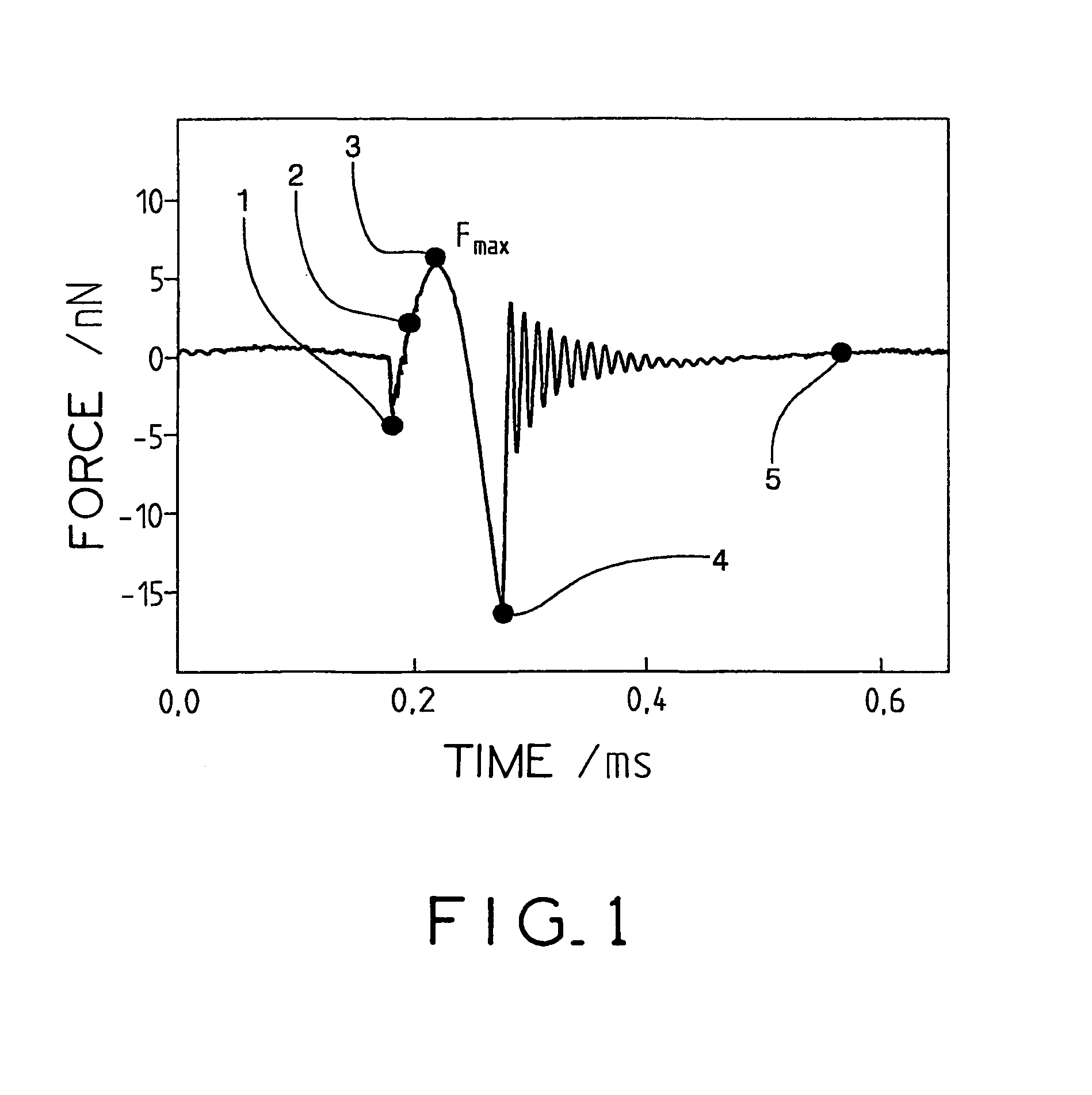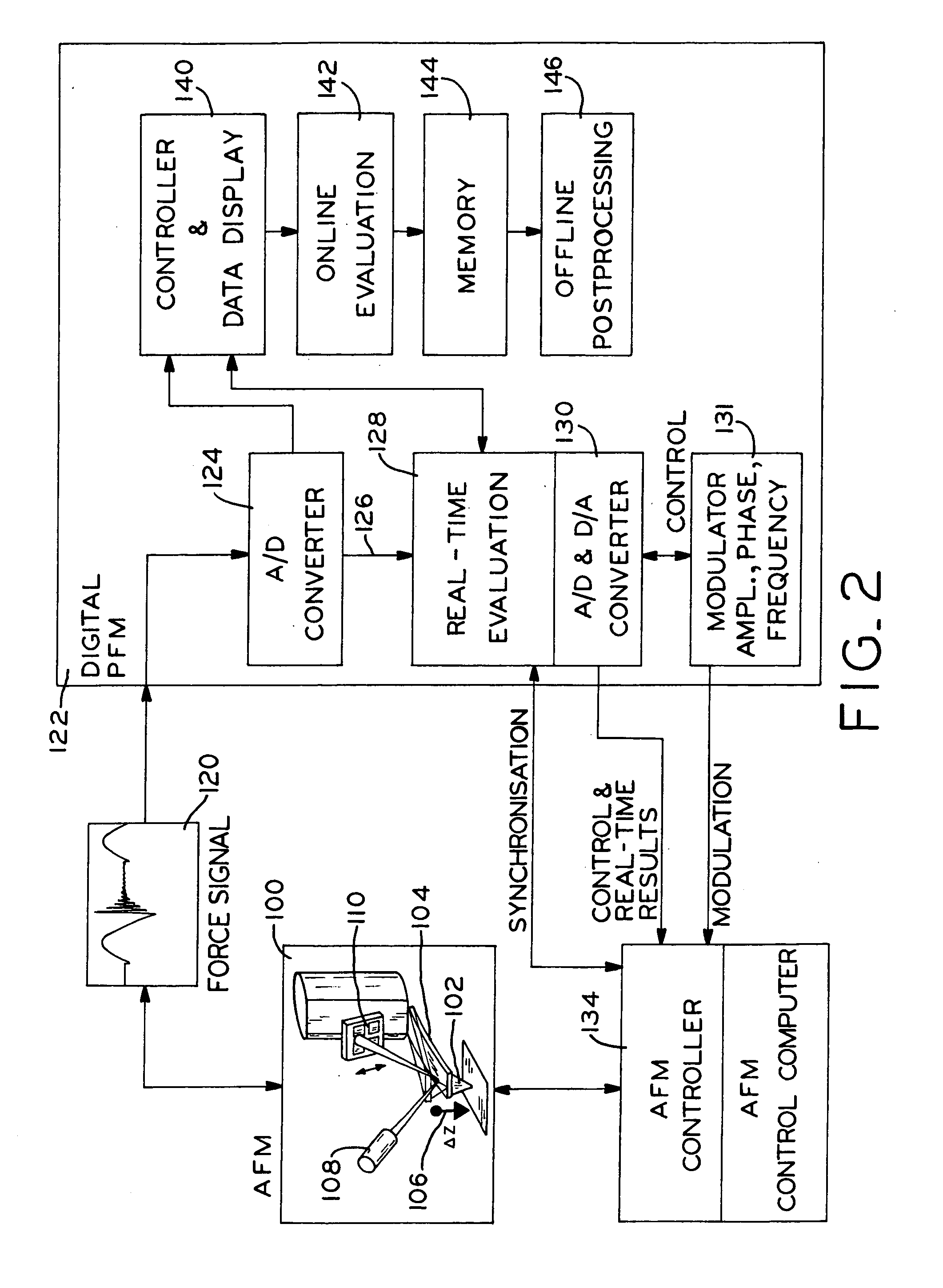Scanning probe with digitized pulsed-force mode operation and real-time evaluation
a scanning probe and pulsed-force mode technology, applied in the direction of scanning probe microscopy, electrical/magnetic measuring arrangement, instruments, etc., can solve the problems of inability to simple allocate to a physical variable, and inability to solve simple mechanical specimen properties. , to achieve the effect of sufficient precision and short period of tim
- Summary
- Abstract
- Description
- Claims
- Application Information
AI Technical Summary
Benefits of technology
Problems solved by technology
Method used
Image
Examples
Embodiment Construction
[0073]FIG. 1 shows the characteristic progress of a force-time curve as obtained after passing through an oscillation period of a scanning probe, which in the present case is a probe tip arranged on a beam. The oscillation amplitude of the oscillation of the scanning probe tip as excited by means of a piezoelectric element lies between 10 and 500 nm and the oscillation frequency between 1 Hz and 5 kHz, and in the present case in the region of 1 kHz.
[0074]FIG. 1 clearly shows the characteristic regions of the force-time curve which arises., when excited, perpendicular to the specimen surface. Said regions can be used for determining the characteristic variables and, when applied to the scanned region, lead to the different forms of image of the specimen surface.
[0075]The function as illustrated in FIG. 1 is already standardized on the base or zero line, which means that the force value of the base line of the scanning probe is set to zero. The base line can be determined in such a wa...
PUM
 Login to View More
Login to View More Abstract
Description
Claims
Application Information
 Login to View More
Login to View More - R&D
- Intellectual Property
- Life Sciences
- Materials
- Tech Scout
- Unparalleled Data Quality
- Higher Quality Content
- 60% Fewer Hallucinations
Browse by: Latest US Patents, China's latest patents, Technical Efficacy Thesaurus, Application Domain, Technology Topic, Popular Technical Reports.
© 2025 PatSnap. All rights reserved.Legal|Privacy policy|Modern Slavery Act Transparency Statement|Sitemap|About US| Contact US: help@patsnap.com



